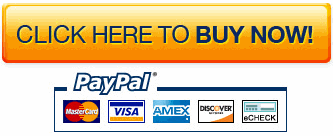Proposal Writing
Proposal Writing Course – Lesson #3: Pre-writing Tactics
Proposal writers often write at high-speed, under intense pressure to complete the bid on time, while ensuring the all aspects of the response are in agreement with the mandatory RFP guidelines. Not an easy task!
In such situations, mistakes are bound to happen. Even more significantly, such working conditions compromise the quality of the bid.
[ Learn more about these Proposal Templates ]
Nonetheless, with this said, proposal writers can improve their position by considering the following questions before starting:
1. What issues are most important to the proposal evaluators?
From the evaluator’s point of view, they’ll be looking to see if you have identified their main problem, such as articulating what issues needs to be solved (besides the most obvious reasons); what goals need to be accomplished; what issues have the highest priority; and what recommendations you are making.
As covered elsewhere on the Klariti.com site, proposals need to be client-centric. Such proposals pinpoint the client’s specific issues (stated and unstated) which ultimately produce a very personalized bid.
2. How do the evaluators perceive your company?
Before bidding, your sales team should have prepared the groundwork with the prospective client. Pre-sales activities will ensure that the client has an idea of who you are—though maybe not as well as you would like—so that you are not submitting a ‘cold’ bid.
A ‘cold’ bid is sent from a company who has had no previous contact with the government agency. Like their telephone equivalent, the ‘cold call’, they tend to have low success rates.
However, if you are bidding to an agency for the first time, you can rectify this by submitting high-quality product brochures, cases studies and white papers.
In addition, you can ‘get-to-know’ the evaluators during the clarification questions, briefing sessions and during the presentations.
3. Will the evaluator’s preconceptions about your company affect the final scoring?
As mentioned previously, if you are new to them then they will generally remain neutral until proved otherwise. Opinions about your credibility, and potential as a winning candidate, will arise when they question your references, meet you in person, and examine the finer details of your bid, such as the terms and conditions.
Evaluators know that references (e.g. referees) are unlikely to speak poorly about the bidding company and may not give much importance to this area—but they will contact the references anyway, as this is part of the formal evaluation procedure.
To make sure you’re represented in the best light, speak to the references in advance and remind them of key areas to emphasize, such as how you delivered on budget, your reliability, and other value-ads.
4. Do competitors hold a preferred position with the evaluators?
When you know that a competitor is in a preferential position with the evaluators, you need to consider if you can:
- Outbid them, both in execution and on price
- Offer a more convincing solution, i.e. technically superior solution
- Explore the competitor’s perceived weaknesses i.e. where you can score points.
If you cannot find solid arguments to dislodge the preferred competitors, you might want to re-consider the bid/no bid strategy.
A typical area where competitors have an advantage is when the incumbent is bidding for an extension of an existing project. In this situation, the incumbent can identify certain areas where you cannot compete, e.g. knowledge of the existing systems.
But, you can counteract this by stressing that your rates, flexibility, competitive bid, SLA, and value-ad make you a worthwhile candidate.
Smaller companies can emphasis their speed, nimbleness and flexibility when competing against vast IT powerhouses.
5. How to position your solution?
When IT personnel write proposals, they often get sidetracked into detailing the system innards. If this is required, then fine. But otherwise, you need to keep these sections in check as they deviate from the proposal’s main objectives.
Likewise, when Sales executives write proposals they can be guilty of adopting a writing style often referred to as ‘marketese.’ Most evaluators are not impressed with this, especially when the copy is snowed under with outlandish claims to product superiority etc.
Essentially, you need to position your solution so that it is aligned exactly with their requirements. To be fair, you sometimes have to work very hard to unearth these requirements as not all Request for Proposal’s are well formulated—but that’s part of your job.
Once you understand this, write the solution description ‘point-by-point’ inline with their submission form. Don’t deviate one iota from the submission form as otherwise you will be disqualified.
Note: be very careful when suggesting a solution that goes above or beyond the requirements. Most evaluators will interpret this as an attempt to out-wit the client.
6. How will be proposals be evaluated?
For most large-scale projects, the evaluators will compile an evaluation grid against which they will score the bids. On EU projects, the evaluation grid is often included with the Request for Proposal.
If the Evaluation Grid is not included with the RFP, you can assume that is will be based on the tender submission format. It is for this reason that you need to prepare your response exactly as per the submission format.
An evaluation grid is a matrix with the key criteria on one side and the weighted scores on the other.
Criteria Weight Score
- Understanding of Requirements
- Technical Capability
- Proposed Solution
- Project Management
- Fixed Price Cost
- Other Factors etc
- Total
7. What weight does each criterion get?
The evaluation team generally allocate the weight according to each respective criterion, e.g. the fixed-price costs.
However, in European Union contracts, the RFP may stipulate that most economically advantageous tender (M.E.A.T) will win the contract.
Conversely, they can also state that they are NOT bound to accept the lowest bid.
Nonetheless, you need to get the cost right. Pre-sales and business development functions should assist you in ‘guess/estimating’ where to pitch your bid.
When bidding, this should be the very first activity to undertake. Do not leave costing to the end!
Evaluators use different formulas to determine financial criteria, such as Value-For-Money, hidden costs and change control.
For this reason, you need to outline your costs very clearly. Any attempt to disguise costs, e.g. bury them inside the terms and conditions, will raise suspicions and erode any trust between the bidder and the evaluators.
Work Breakdown Structure template with sample data
[ Learn more about these Proposal Templates ]



